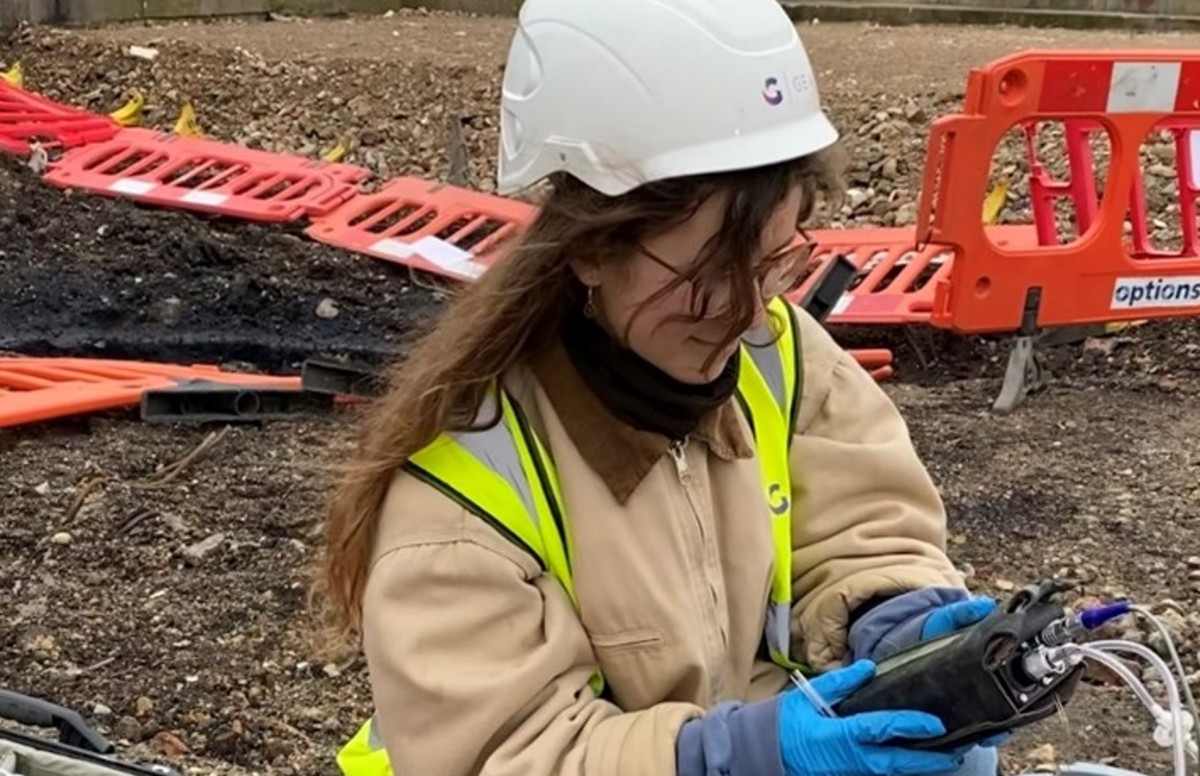The Best Guide To Geotheta
The Best Guide To Geotheta
Blog Article
An Unbiased View of Geotheta
Table of ContentsEverything about GeothetaFascination About GeothetaThe Greatest Guide To GeothetaOur Geotheta PDFs
They work together with civil designers, structural engineers, engineers, and other experts to integrate geotechnical factors to consider right into the general project design and construction procedure. This requires effective synergy, coordination, and communication to make sure that the geotechnical facets line up with the task purposes and meet regulative demands.Mining & Products Engineering: Concepts of exploration, penetration rates, and factors affecting the choice of drilling technique. Blowing up techniques in surface area and underground functions. Mechanical and continual techniques to fragmentation, consisting of longwall shearing and fullface boring.
Modelling of fragment and bit dimension circulations; comminution as a transfer feature. Comminution technology: squashing, grinding, size classification. Integrated evaluation of fragmentation and comminution procedures. Used by: Mining & Materials Design.
The Ultimate Guide To Geotheta
Bachelor's degree programs in civil, geotechnical, geological, and environmental engineering commonly last 4 years and include basic education and learning training courses in English, social scientific research, and the liberal arts, as well as training courses in advanced mathematics, structural geology, and fluid mineralogy. (https://www.slideshare.net/ianhammond2191)
Geotechnical engineering entails the evaluation of the dirt and rock conditions at a particular site, and their ramifications for the development of that site. As a lot of structures depend on the ground for support, it is without shock that a detailed understanding of the ground conditions, and the suitability of structure systems, are important to the lasting stability and efficiency of the building or framework.
Specialising in the examination of geological developments and ground behaviour, geotechnical engineers carry out clinical investigations and screening to comprehend the influence these geological developments might have on the design and building of building, civil and infrastructure tasks. This knowledge is essential for the style and building and construction of structures, roadways, passages, dams, bridges, and water supply and sewage systems.
The geotechnical group at Douglas Allies routinely speak with designers, layout designers, developers, and home builders to make suggestions on style and advancement proposals to guarantee that the built structures are suitably designed for the ground conditions. The style of footing systems requires to think about the weight of the structure, the ability of the ground to support that weight together with motion resistances and efficient building.
The Basic Principles Of Geotheta
This task is considerably simplified by the use our Douglas Map geospatial system which makes this information conveniently accessible in a simple to utilize internet browser interface. A geotechnical engineer will certainly guide the exploration of boreholes and examination pits to gather dirt and various other samples, and likewise evaluate surface area features and ground exposures to form a geotechnical design of the subsurface problems.
Depending upon the project type and ground conditions came across, laboratory testing may among various other points examine strength, compressibility, sensitivity and/or permeability of dirt and rock samples. After this information is accumulated and collected, the results are utilized for a geotechnical model of the website, which is commonly offered as areas throughout the site.

A geotechnical examination naturally can only evaluate the ground conditions at the locations pierced or excavated. All-natural variations in dirt and rock problems can occur across a site and in between test locations. It is as a result excellent practice that the geotechnical designer be kept throughout building of the task to offer on-site confirmation that the ground problems encountered are regular with the expectations and recommendations given in the geotechnical examination report.
The Ultimate Guide To Geotheta
Geotechnical engineers use their in-depth expertise of dirt and rock to examine threat and resolve problems on varied framework projectsGeotechnical engineering is a specialist branch of civil engineering which looks at the behavior of earth materials and the application of soil and rock technicians. Geo Tech Engineer. As a geotechnical engineer, you will certainly assess the physical, mechanical and chemical residential properties Tailings Engineer of dirt and rock in order to design structures, preserving frameworks and earthworks
Geotechnical design is very closely linked to and overlaps with, both engineering geology and ground engineering - https://www.mixcloud.com/geotheta/. It's possible to specialise in geotechnics or help a geotechnical company however be referred to as a design rock hound or a ground designer. As a geotechnical engineer, you'll require to: develop and keep relationships with customers and various other professionals associated with the website, throughout each projectmaintain security standards on website bear in mind expense ramifications when you make recommendationsstudy geological maps and airborne photos from a variety of resources and from various time periodsexamine building plans to see exactly how possible they are based on your understanding of the siteinvestigate risks or geological dangers for the sitesearch for environmentally delicate functions, such as land fill begin to develop accurate and expository ground modelsplan field investigationsdrill and analyse examples of bedrock, dirt, groundwater and added materials oversee other professionals on sitesolve technical problems as they emerge, such as unanticipated frameworks at drill sitesmonitor conditions throughout and after building and construction to make certain frameworks are stable in the brief and long termadding data collected on site to your preliminary researchcreating geotechnical estimations, drawings, and two or three-dimensional computer system models analyzing the datamaking suggestions about the suggested use the site

Report this page